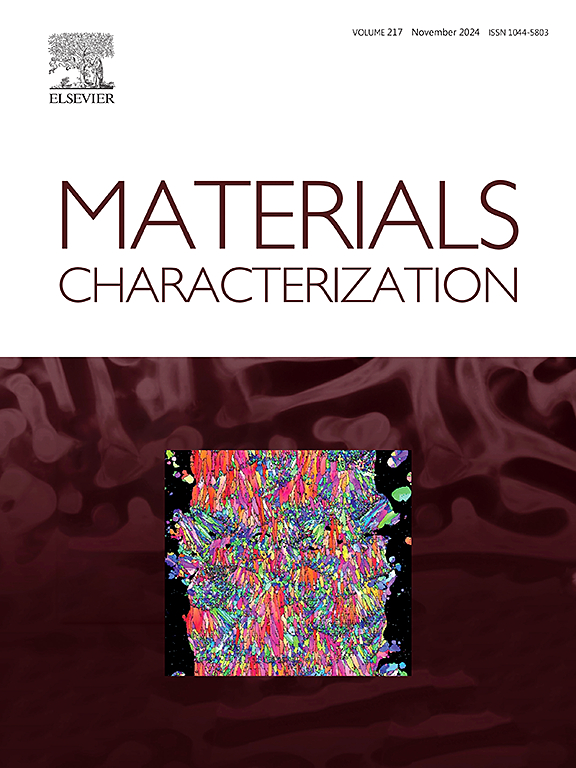用于增材制造的Al-1Fe-1Zr合金的纳米级3D表征
IF 4.8
2区 材料科学
Q1 MATERIALS SCIENCE, CHARACTERIZATION & TESTING
引用次数: 0
摘要
Al-1Fe-1Zr合金利用激光粉末床熔合所固有的非平衡凝固动力学,具有高热梯度和快速凝固前沿速度的特点。在这里,我们使用最先进的基于同步加速器的纳米层析成像技术研究了合金的三维微观结构。采用高分辨率全息和近场平面x射线计算机断层扫描,实现小至57纳米的空间分辨率。我们的对比分析表明,近场全息体层析成像具有优越的信噪比和空间分辨率,而全息体层析成像能够以最小的质量损失更快地获取数据。这些方法揭示了富铁和富锆金属间相的三维分布、形态和互连性。互补x射线荧光计算机断层扫描进一步提供元素wt%的定量局部信息,以0.1 wt%的分辨率显示Fe和Zr的分布。研究结果突出了有助于增强合金强度和导热性的关键微观结构特征,为优化其在LPBF应用中的性能提供了关键见解。本文章由计算机程序翻译,如有差异,请以英文原文为准。

Nanoscale 3D characterization of an Al-1Fe-1Zr alloy for additive manufacturing
The Al-1Fe-1Zr alloy exploits the non-equilibrium solidification dynamics inherent to laser powder bed fusion, characterized by high thermal gradients and rapid solidification front velocities. Here, we investigate the alloy's 3D microstructure using state-of-the-art synchrotron-based nano-tomography techniques. High-resolution holographic and near-field ptychographic X-ray computed tomography were employed, achieving spatial resolutions as small as 57 nm. Our comparative analysis shows that near-field ptychographic tomography offers superior signal-to-noise ratio and spatial resolution, while holographic tomography allows for faster data acquisition with minimal loss in quality. These methods reveal the 3D distribution, morphology, and interconnectivity of Fe-rich and Zr-rich intermetallic phases. Complementary X-ray fluorescence computed tomography further provides quantitative local information on elemental wt%, revealing Fe and Zr distribution with a resolution of 0.1 wt%. The findings highlight key microstructural features that contribute to the alloy's enhanced strength and thermal conductivity, offering critical insights for optimizing its performance in LPBF applications.
求助全文
通过发布文献求助,成功后即可免费获取论文全文。
去求助
来源期刊

Materials Characterization
工程技术-材料科学:表征与测试
CiteScore
7.60
自引率
8.50%
发文量
746
审稿时长
36 days
期刊介绍:
Materials Characterization features original articles and state-of-the-art reviews on theoretical and practical aspects of the structure and behaviour of materials.
The Journal focuses on all characterization techniques, including all forms of microscopy (light, electron, acoustic, etc.,) and analysis (especially microanalysis and surface analytical techniques). Developments in both this wide range of techniques and their application to the quantification of the microstructure of materials are essential facets of the Journal.
The Journal provides the Materials Scientist/Engineer with up-to-date information on many types of materials with an underlying theme of explaining the behavior of materials using novel approaches. Materials covered by the journal include:
Metals & Alloys
Ceramics
Nanomaterials
Biomedical materials
Optical materials
Composites
Natural Materials.
 求助内容:
求助内容: 应助结果提醒方式:
应助结果提醒方式:


